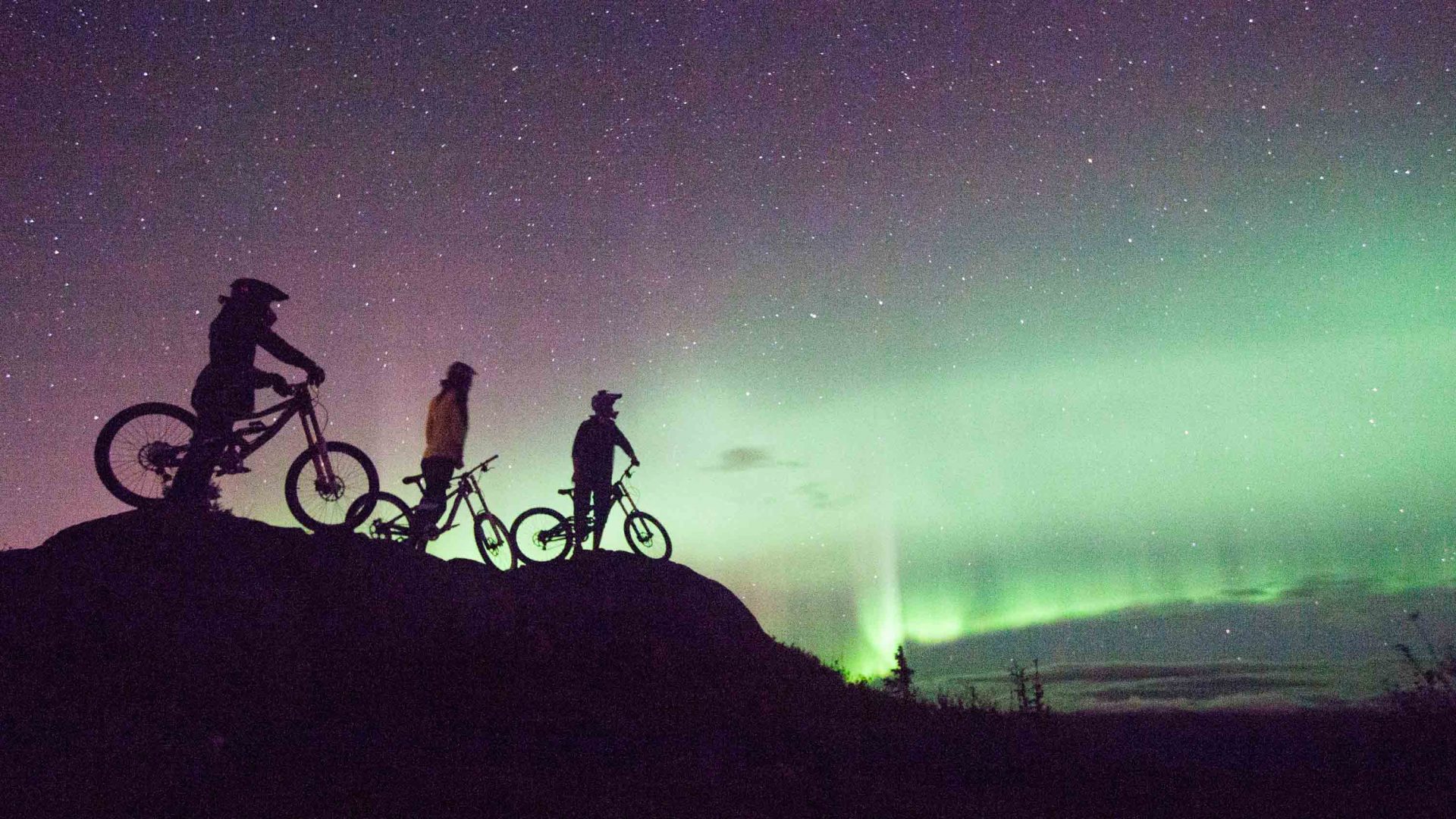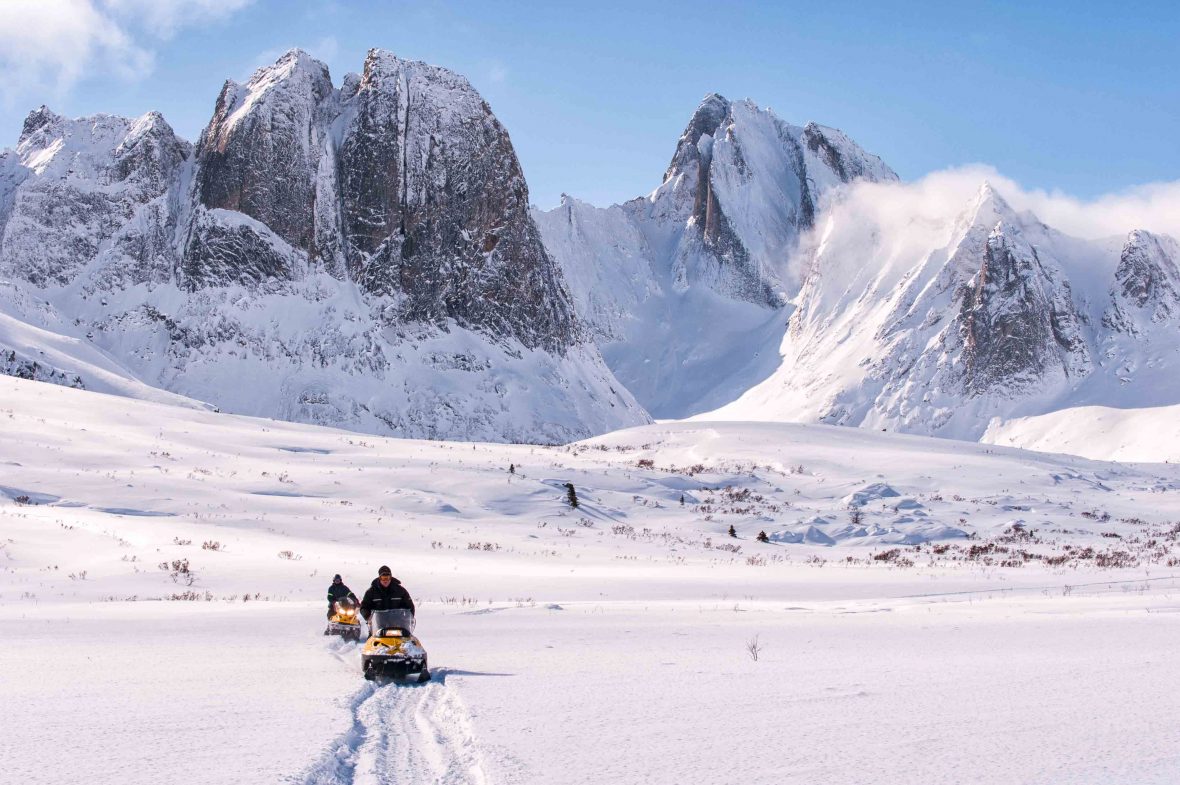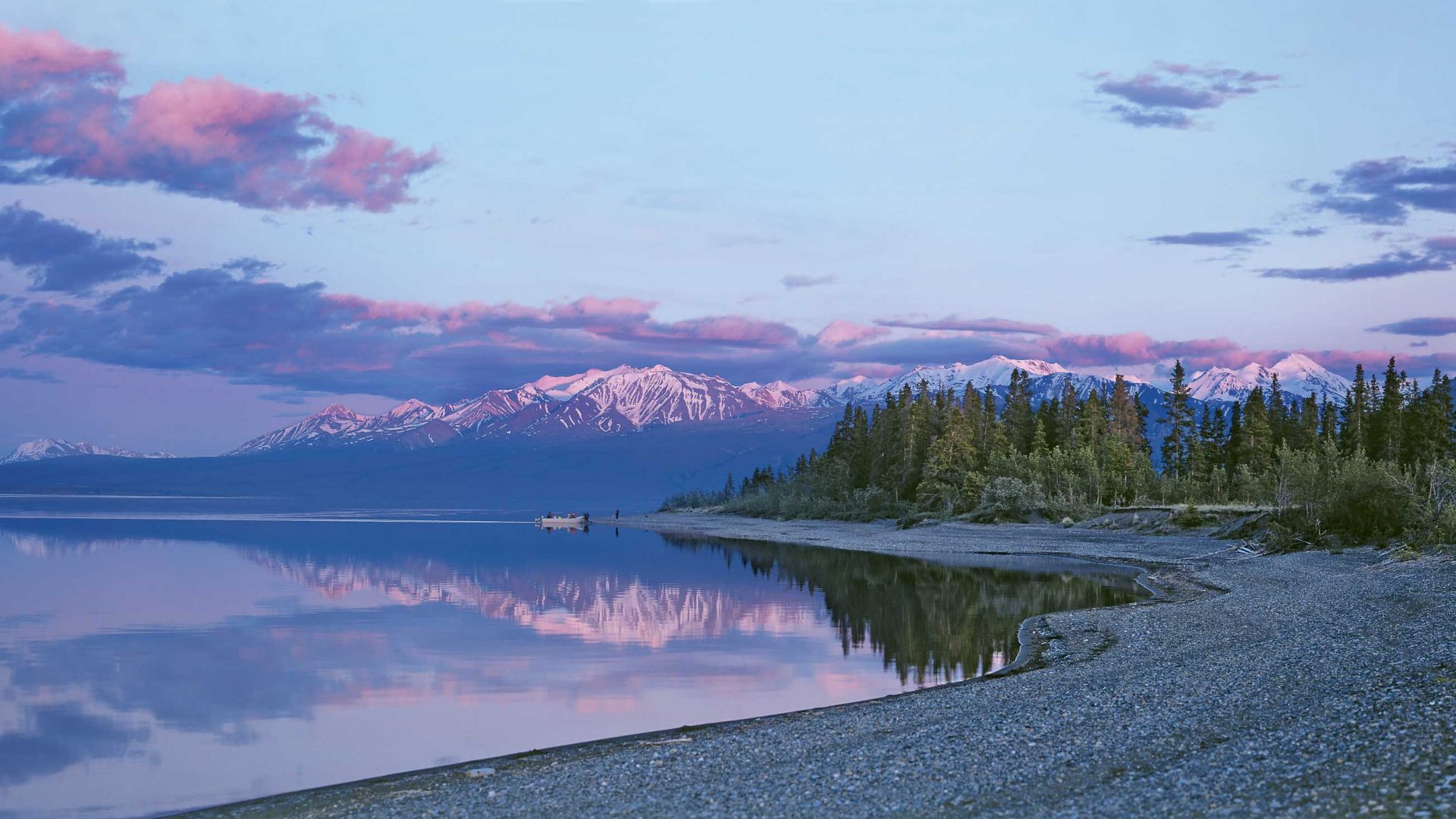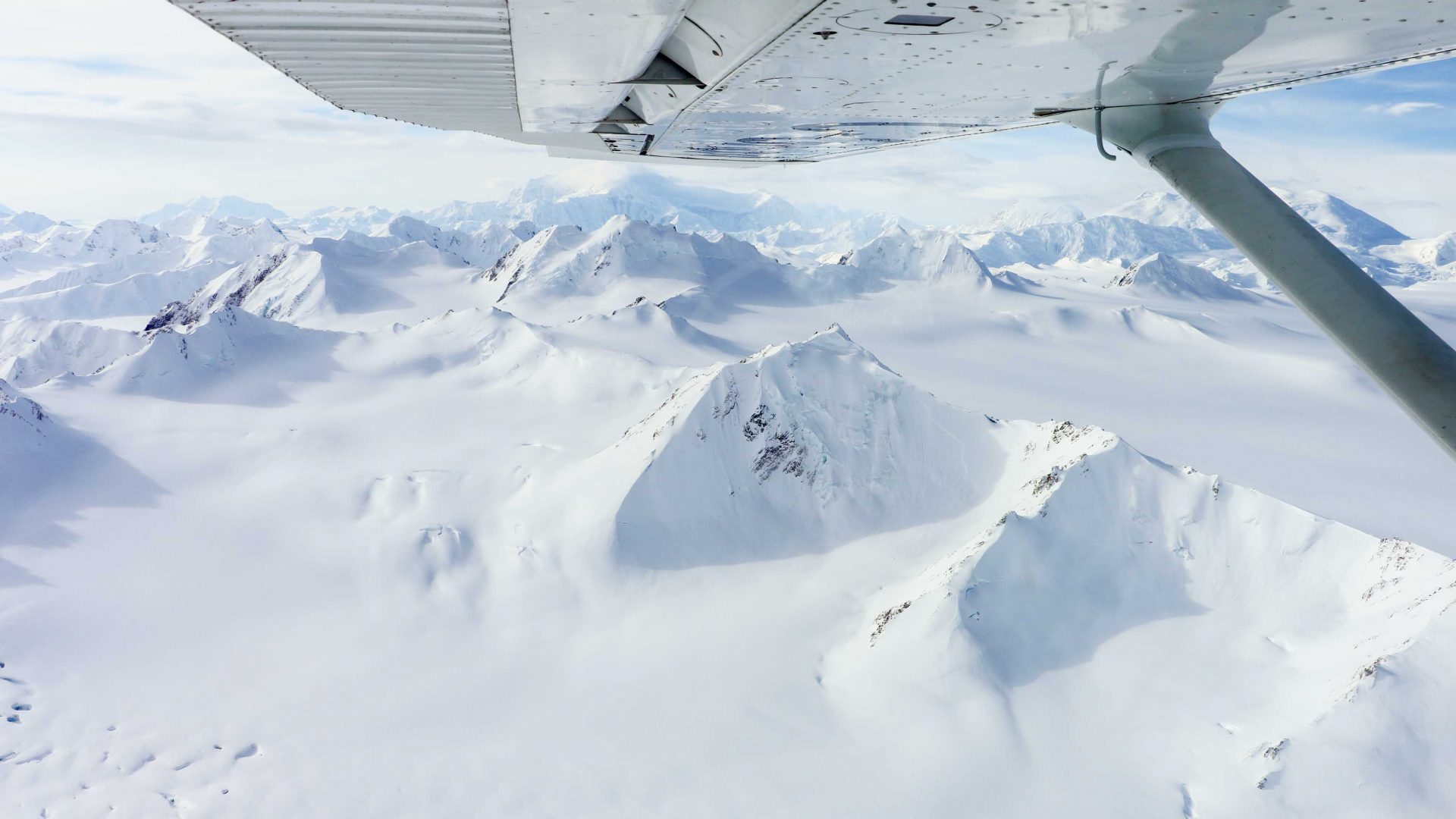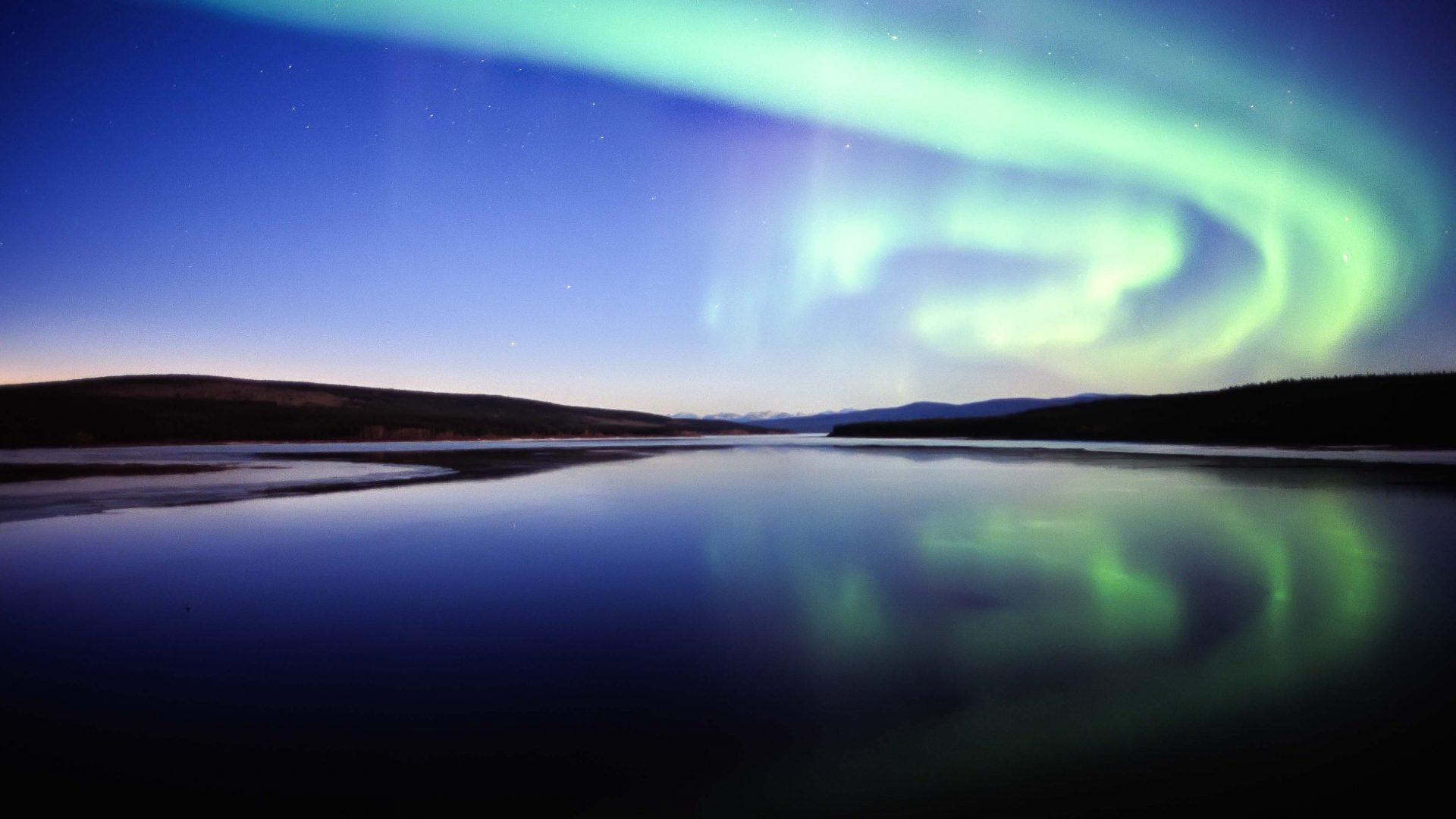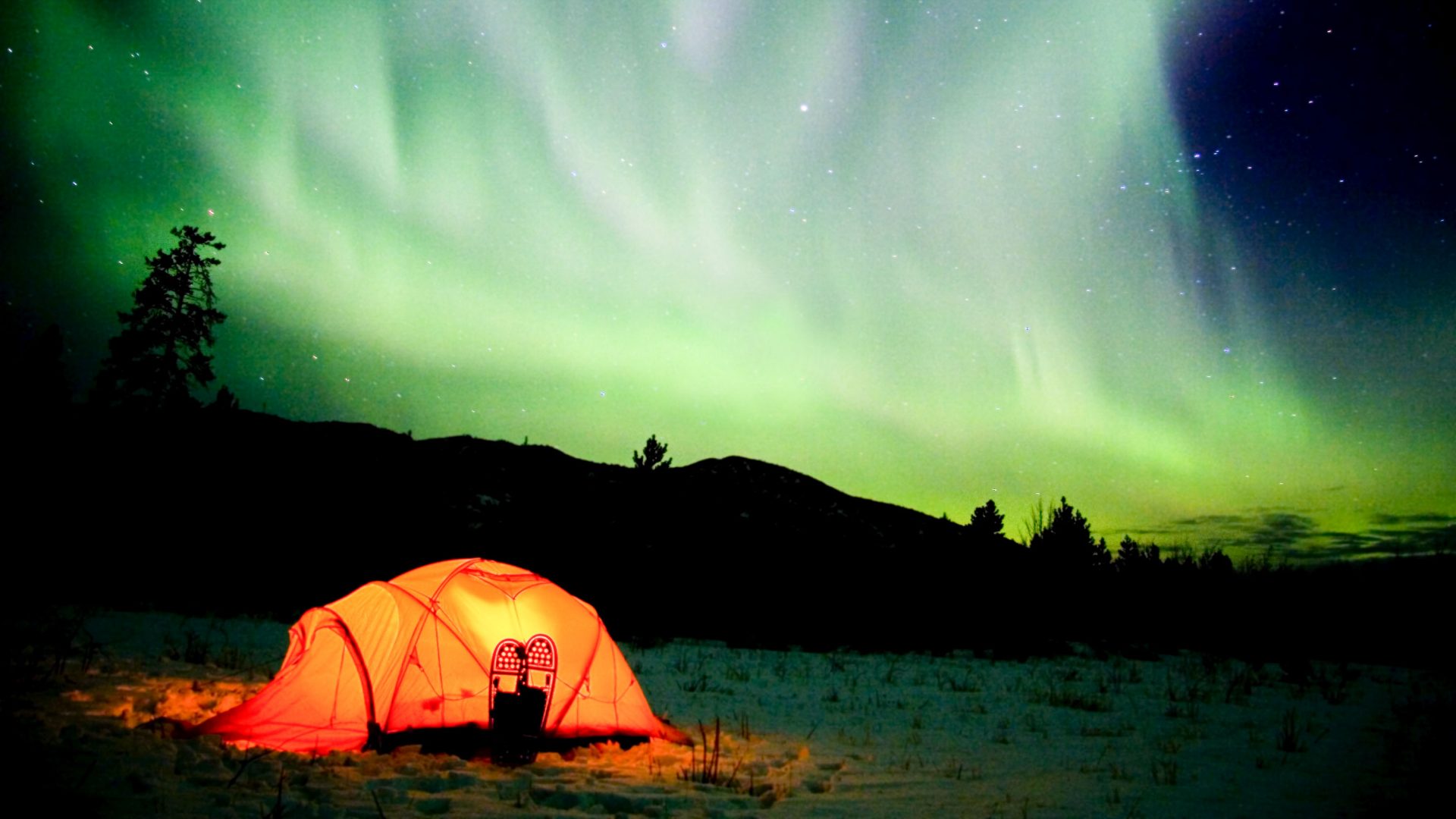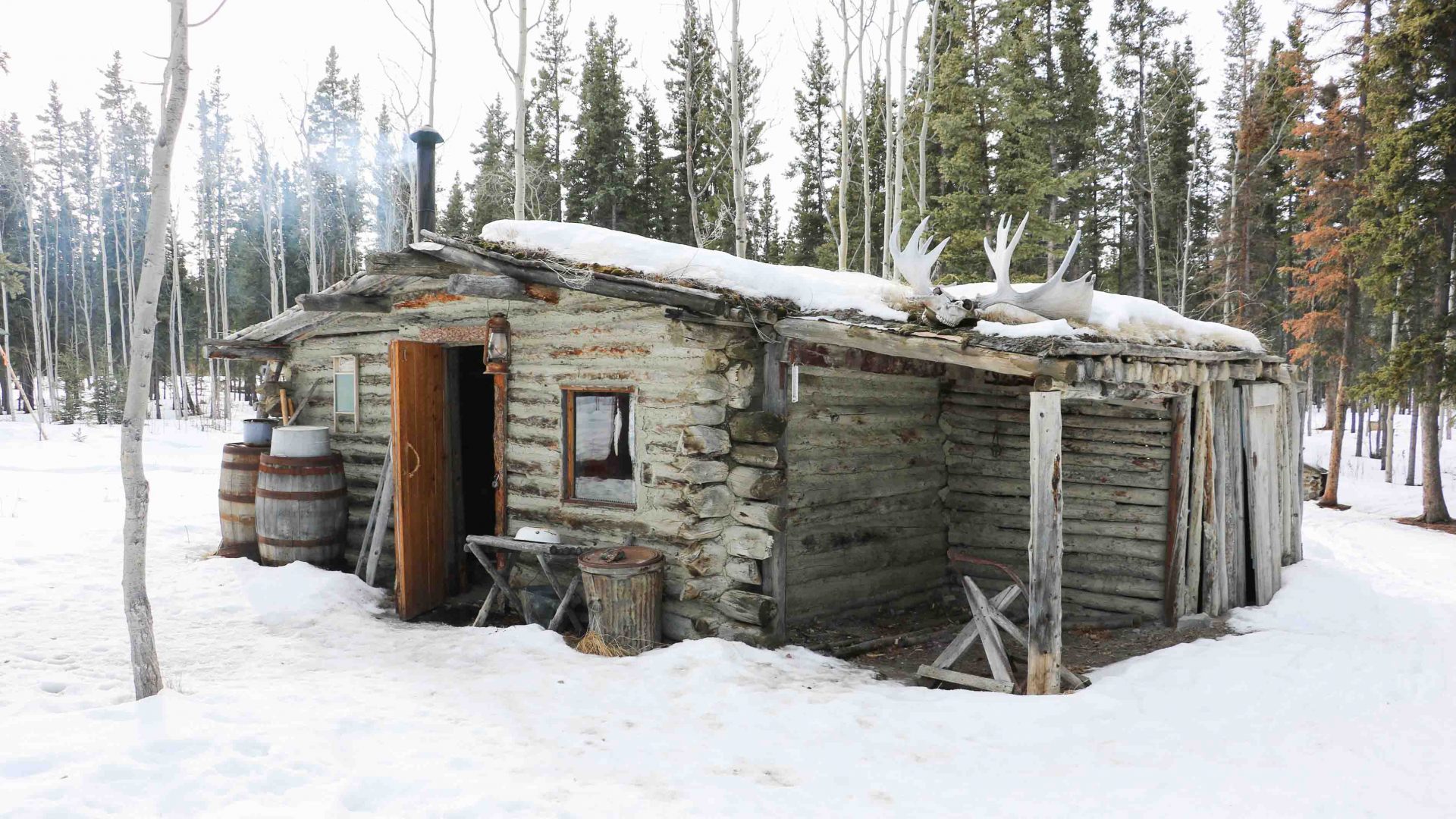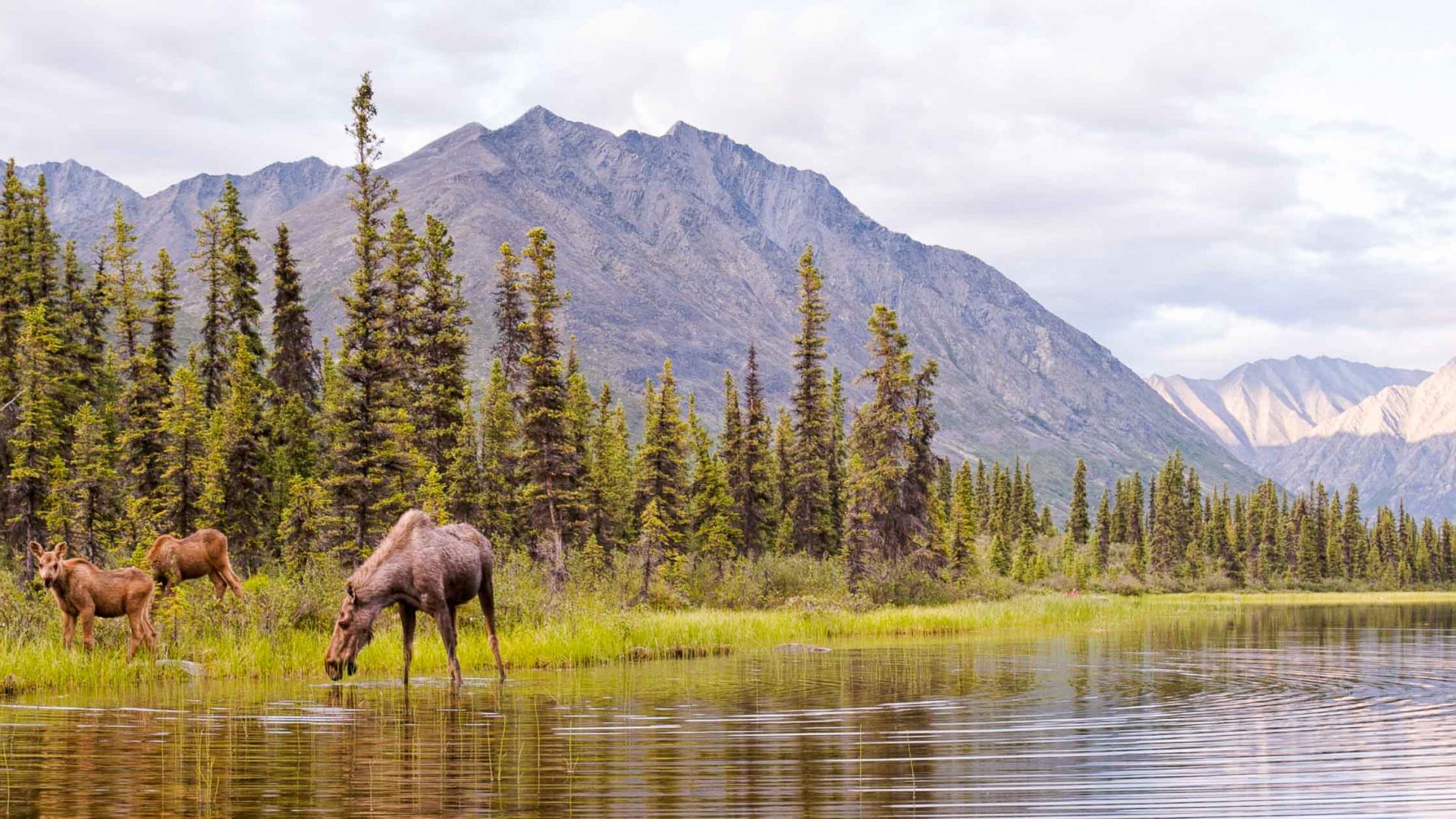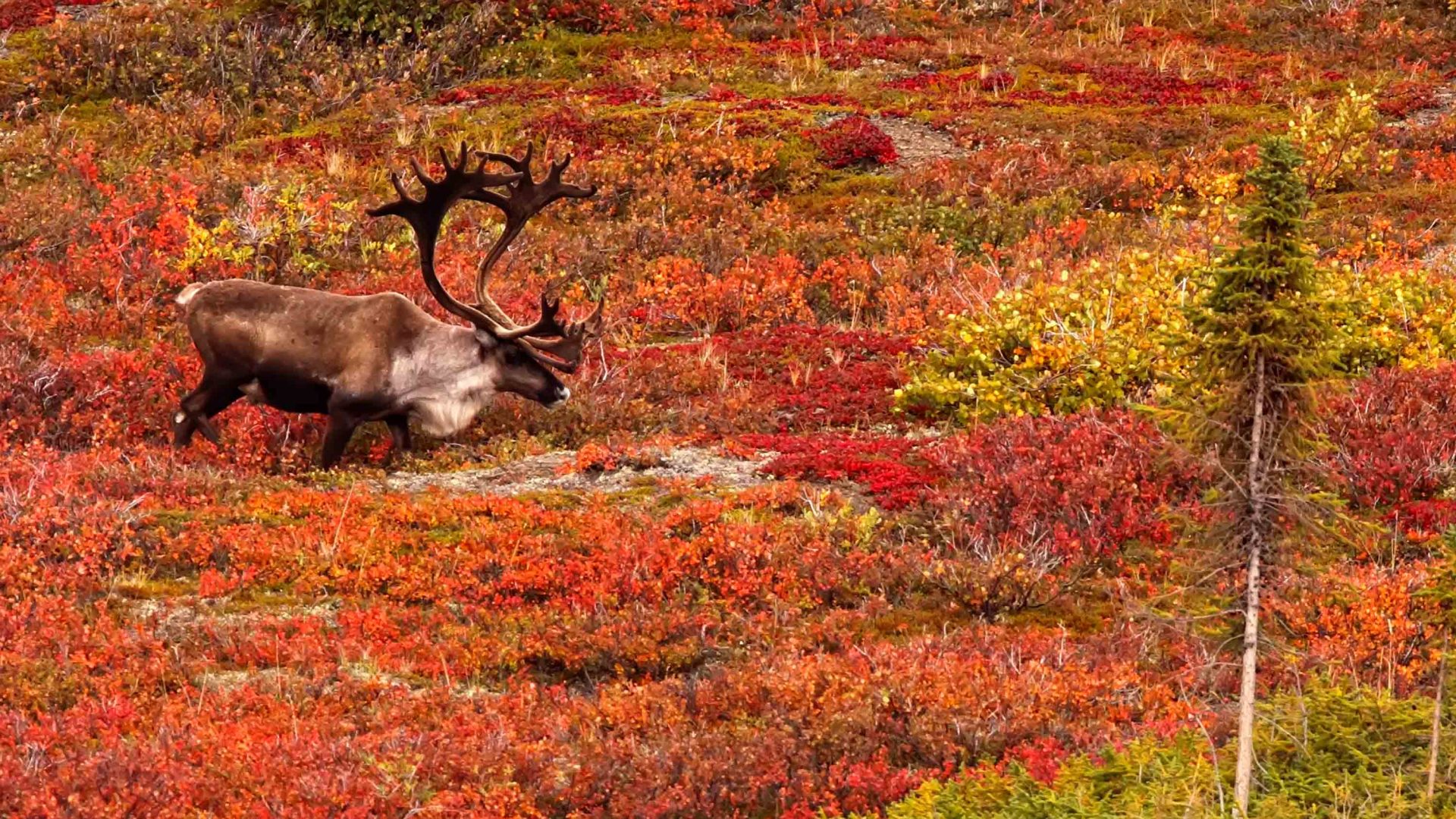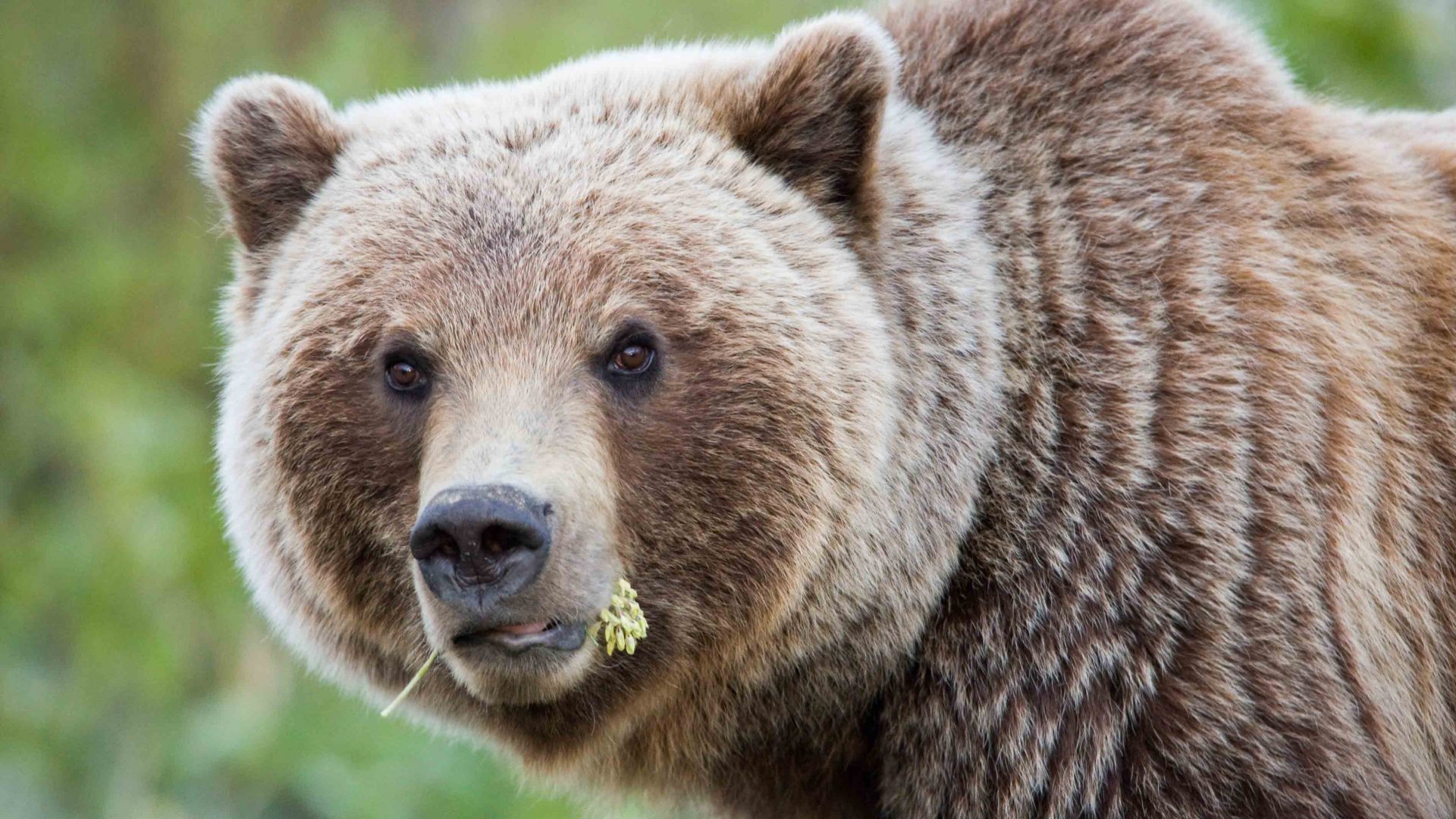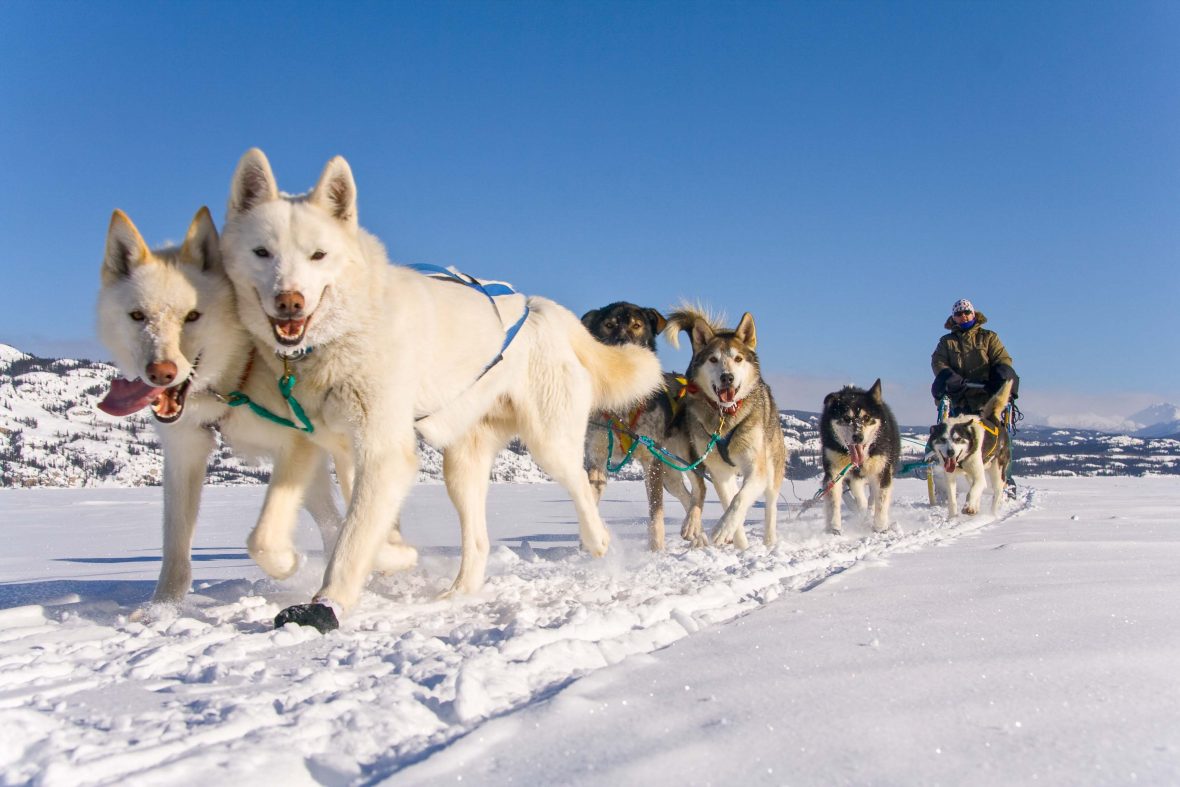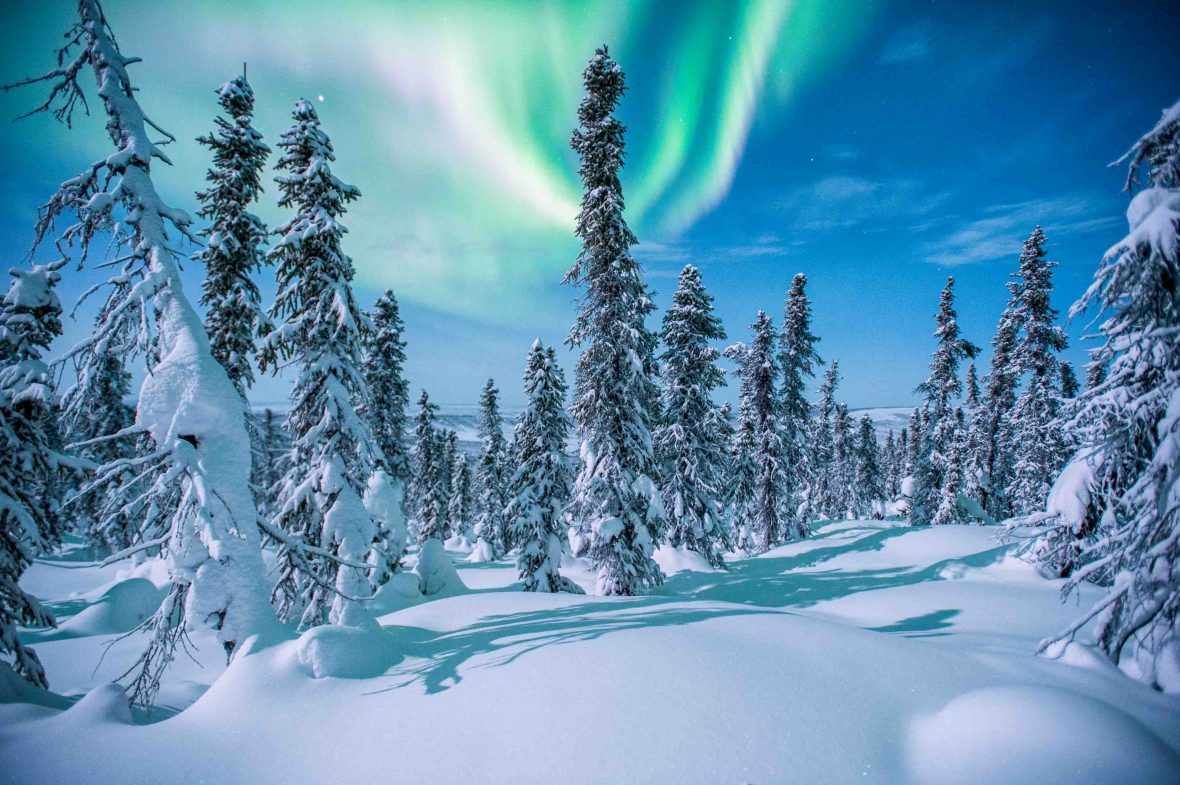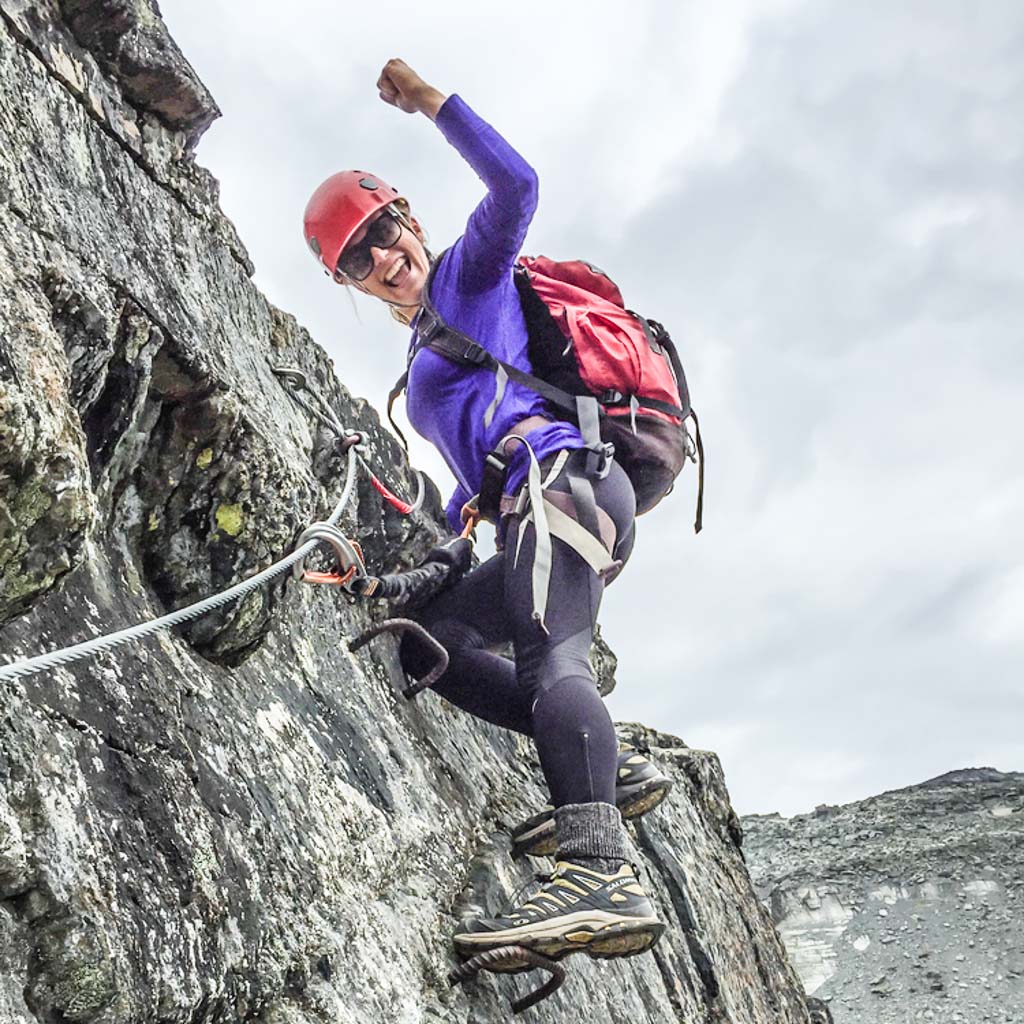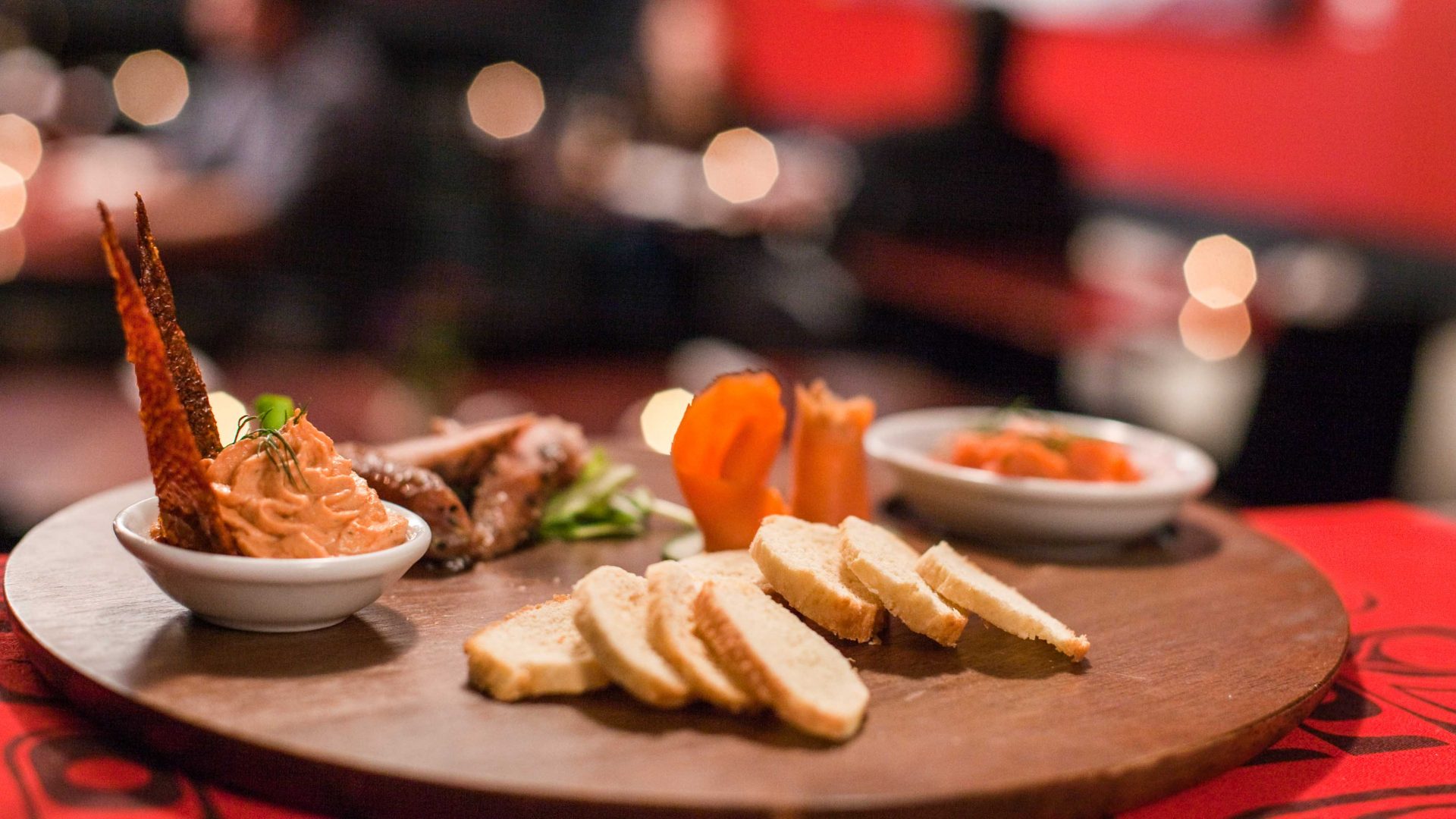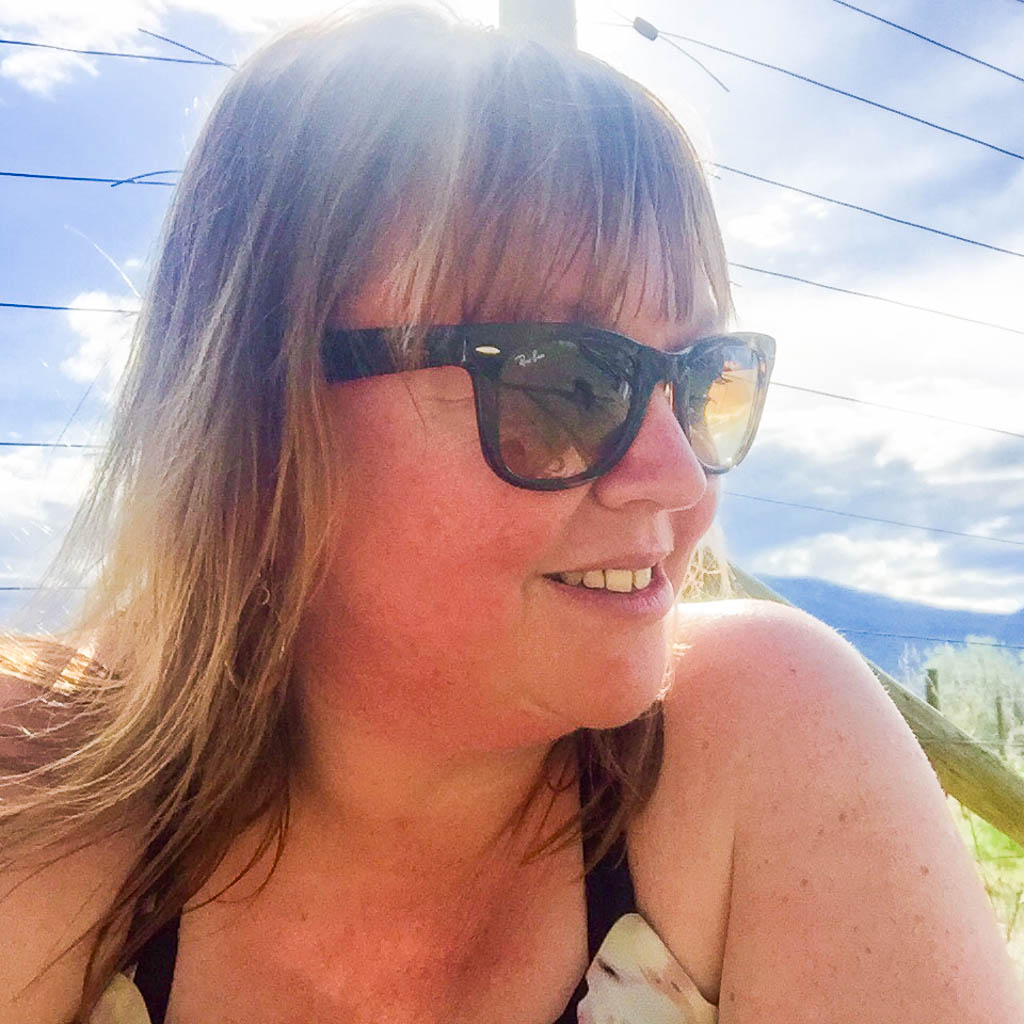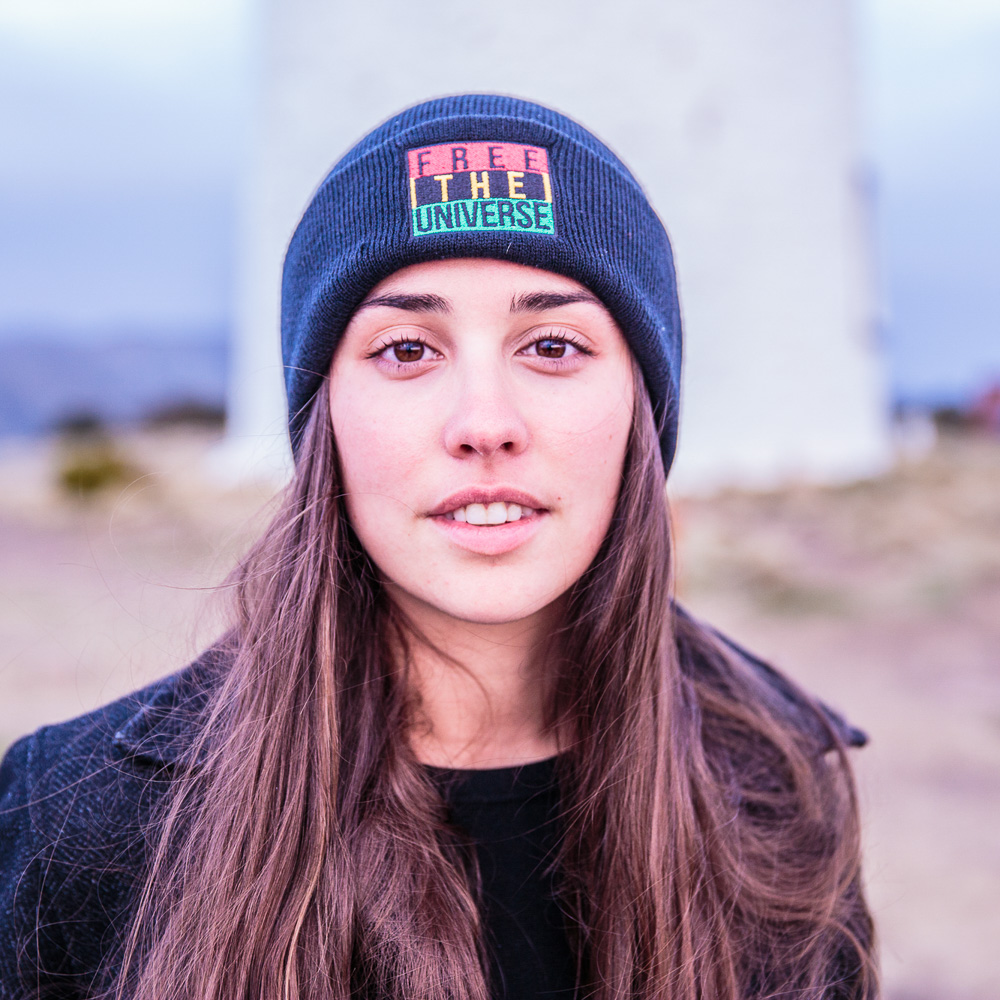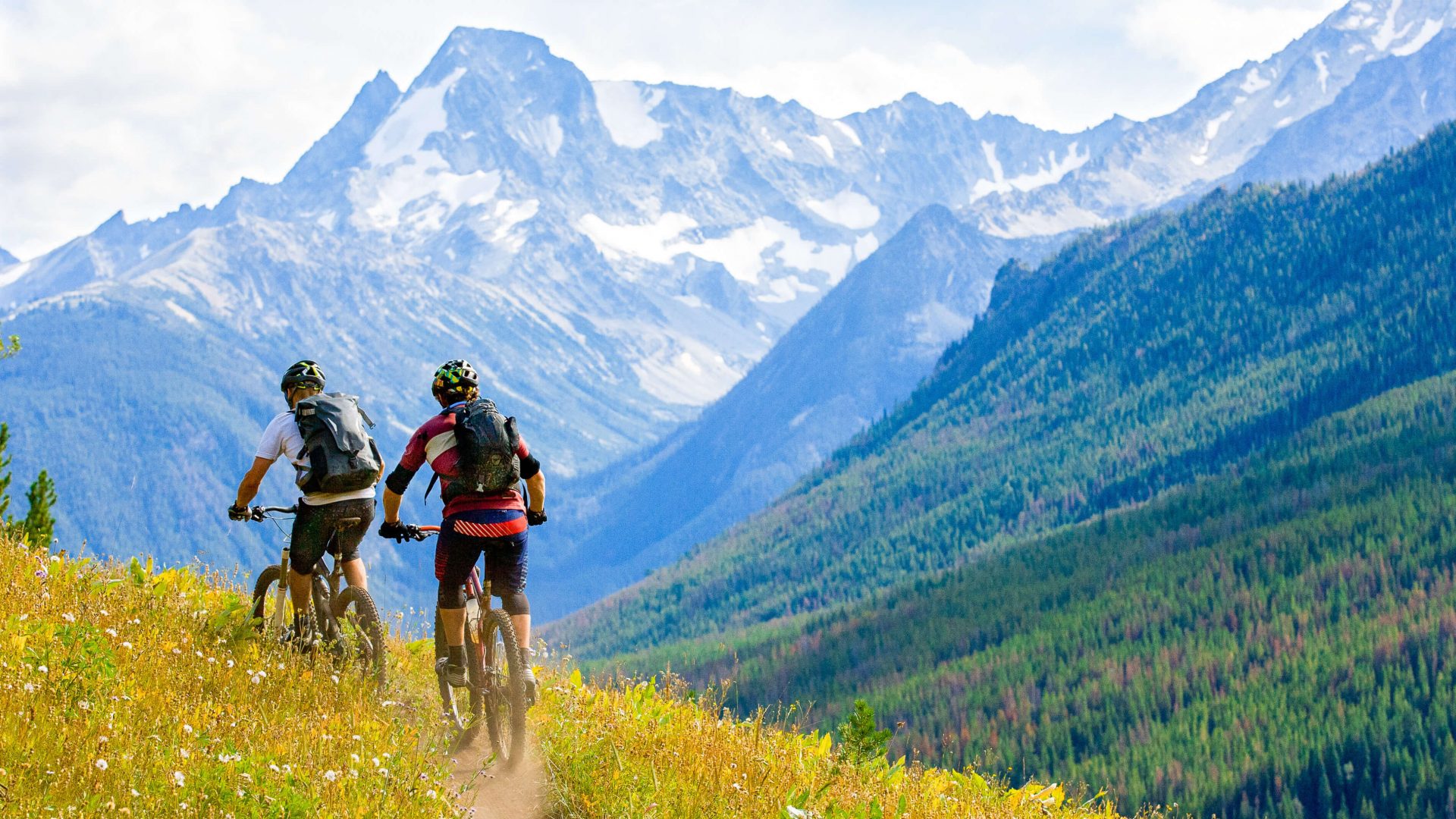Too extreme. Too crazy. Too expensive. There’s a misconception that Canada’s frozen north is beyond reach. But not all adventures in the Yukon need to be massive, says travel writer Mike MacEacheran.
Somewhere out on the lake, the snowmobile swerves and we’re suddenly on the ice proper: A medley of hard-packed crystals and frost which glimmers in the midwinter sun, hiding a murky abyss below. It is on this water, hunched on upturned bait buckets, that we’ll catch our lunch. Or soon we’ll go hungry.
“The trick with ice fishing is to stay warm and keep your lure moving,” says ice fishing pro Patrick Beille, jigging his line and peering into the auger-cut ice hole. “The cold water means the lake char (a type of Arctic fish) slow down in winter, making them harder to catch. And I should know: Sometimes it’s taken me three days to get one.”
It’s chilly out on the ice, by any measure. With the mercury hovering around -20°Celsius (-4° Fahrenheit) on Caribou Lake, a natural rink south of territorial capital Whitehorse, we’re dressed head-to-toe in padded jackets and trousers. On our feet are thick, insulated boots suitable for nothing less than moon walking. Gloves are doubled up, so too are neck-warmers and thermal undies. Below us, land and ice mix like watercolor.
One man who is used to taming Kluane is Daniel Clunies-Ros—a guide, pilot, mechanic, radio operator and grizzly bear-spotter who, ever since his father first took him up in a six-seater Cessna as a teenager, has called the park his back yard. All is usually quiet in the tiny village of Haines Junction, a single strip of cabins and motels, tucked between empty Kathleen Lake and empty sky—until, that is, the Rocking Star pilot buzzes off from the landing strip to fly magnetic west.
“The glacier ahead is 17 kilometers [10 miles] wide, if you can believe it!” he says, swooping low over a leviathan-sized floe. More appear, named after Victorian explorers—Fisher, Lowell, Hubbard, Ritchie, Seward, Tweedsmuir—while others are more unfathomable, as if created by some mischievous god to keep adventurers out. “That’s Kaskawulsh and it flushes water into both the Arctic and Pacific Oceans. Pretty cool, huh?” This is North America at its wildest and most unfiltered; a place to step back and gawp at the sheer power of nature.
Far from an ordinary afternoon, we lurch through forests of fir and fireweed, the mountains silhouetted against overcast skies and a white-on-white background. From the back of the sled, stood astride two metal runners, Vincent’s back is doubled-over as if handicapped from the weight of falling snow, and he holds tight, yelling commands at speed: “Gee” to turn right. “Haw” to veer left, preventing a collision with a thick copse of pine. Between the trees, the sled jettisons out onto a frozen lake before making the journey back to the lodge. It is just in time. Darkness is falling and the temperatures will soon hit -30° Celsius (-22° Fahrenheit). It’s not a night for accidents.
Man and dog vs. Mother Nature. It’s a scene that seems entirely unnatural in the modern age, yet one that epitomizes the timeless appeal of Canada’s last frontier. And that’s where the Yukon’s real magic comes in. It’s where sleds and snowshoes triumph, where impossible-sounding deserts exist side-by-side with unfathomable icefields, and where even the smallest thrill can turn into the adventure of a lifetime.
—-
